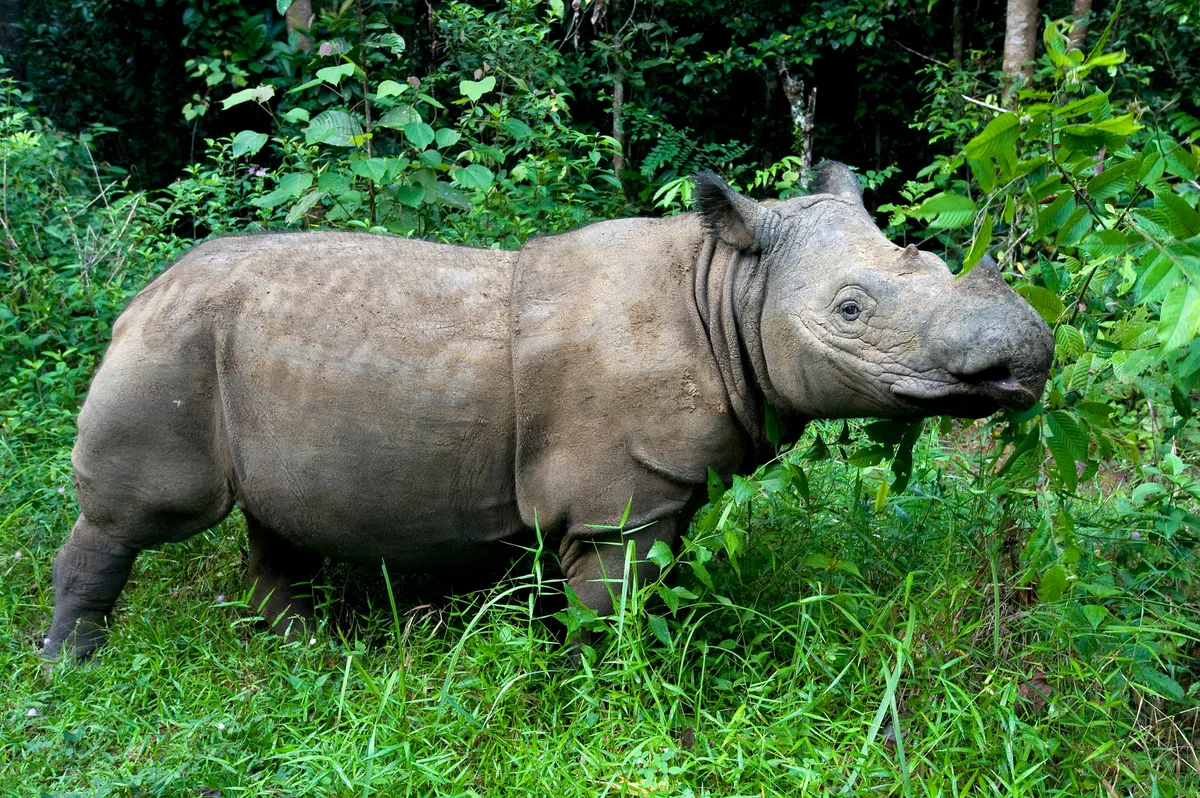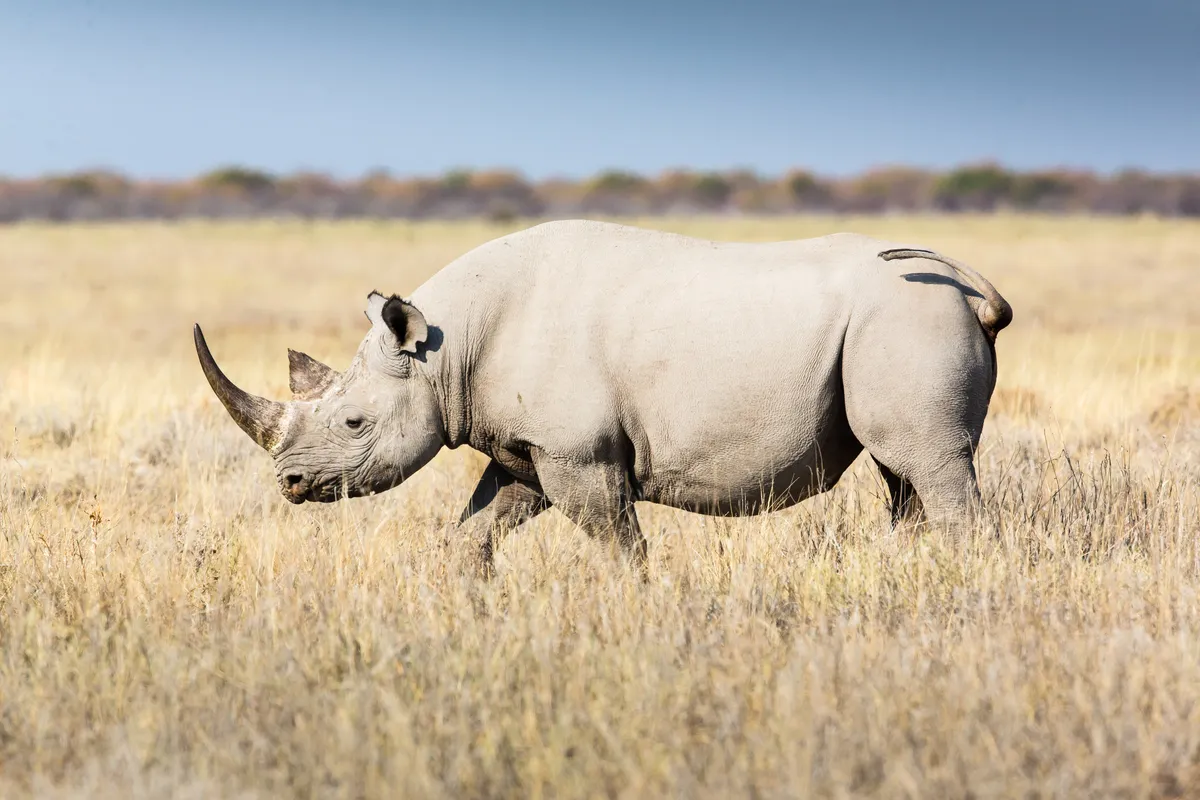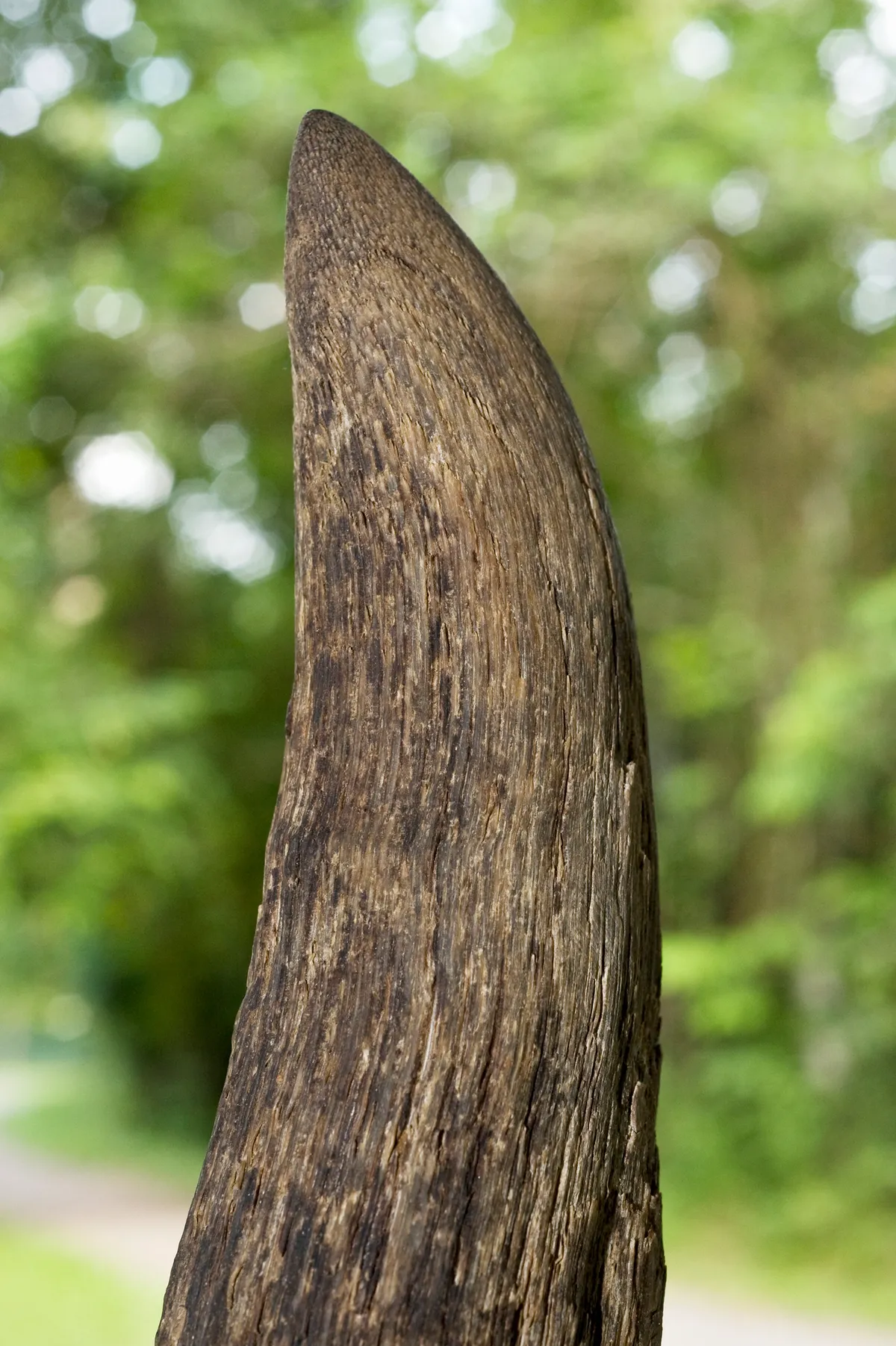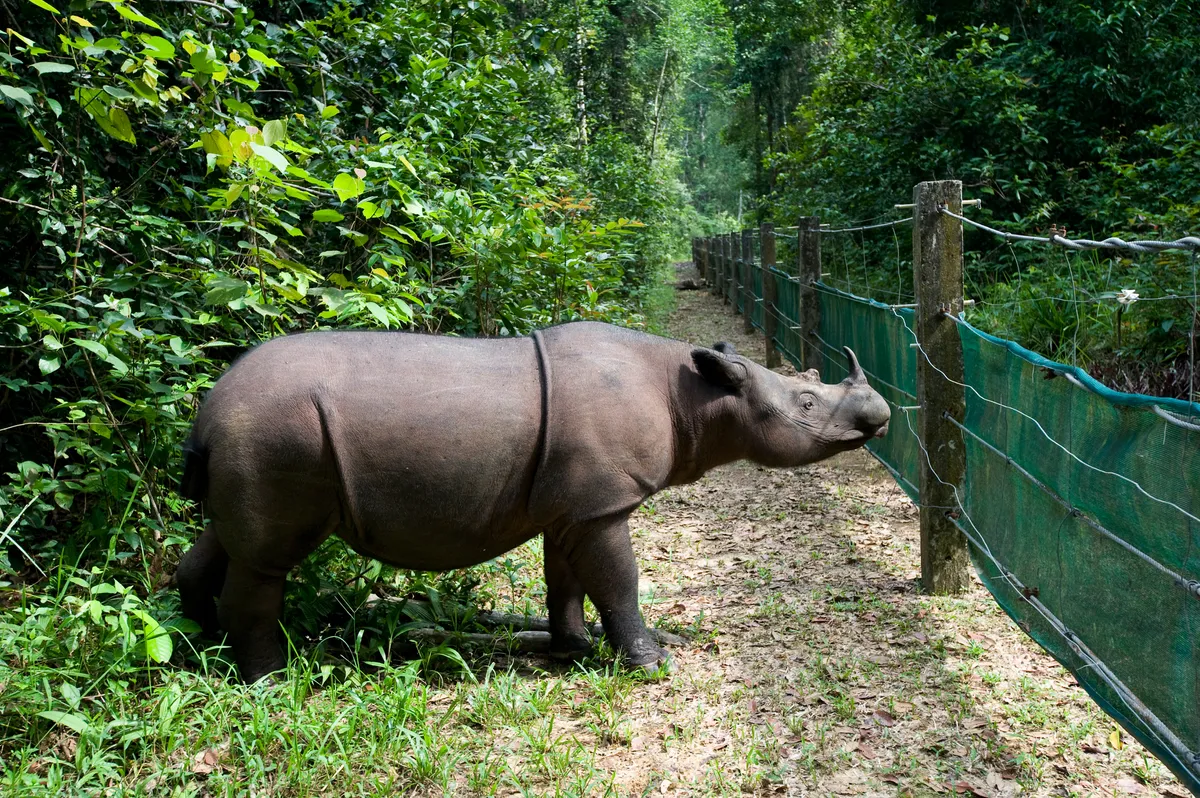1
How big is the Sumatran rhino?
The Sumatran rhino is the smallest of the world’s 5 rhino species.
Although still fairly sizable, standing nearly 5 feet at the shoulder and weighing 600-950kg, this rhino is diminutive indeed compared to the largest species, the white rhino. These hefty beasts can measure over 6ft at the shoulder and weigh up to 3,600 kg. Only elephants overtake them as the largest extant land animal.


2
How many Sumatran rhino are left in the wild?
There are fewer than 80 remaining in the wild.
Sumatran rhinos were once quite numerous throughout Southeast Asia and in 1986 there were thought to be as many as 800 living in the wild. In the 33 years since this number has dropped dramatically, at a rate of more than 50% per decade.
The decline from their greatest abundance is thought to be in part due to a climate shift that occurred about 9000 years ago from which their population never fully recovered, but the dramatic modern decline is due mainly to human influence.
Habitat loss due to deforestation and agriculture has pushed the species in to ever smaller pockets of forest, and due to fragmentation, they are struggling to find mates. Unless connecting corridors between habitats are maintained the reproductive success of the species will continue to fall and the population dwindle even further. Much of this deforestation is to make way for oil palm plantations. By making sure to buy sustainable palm oil products you can help to preserve the Sumatran rhino's habitat.
Poaching is another major threat to these rhinos, with their horns in high demand for use in traditional medicine. The price of a Sumatran rhino horn has been estimated to be as high as US$30,000 per kg.
The Sumatran rhino is the second most endangered rhino, after the Javan rhino, of which there are only an estimated 58-68 individuals living only in Ujung Kulon National Park in Java, Indonesia.

3
Have Sumatran rhino died out completely anywhere?
In May 2019 the last male Sumatran rhino in Malaysia died.
The species was declared extinct in the wild in Malaysia in 2015, but this male, Tam, lived in a protected reserve, where he was guarded by a Rhino Protection Unit.
Tam was rescued from an oil palm plantation in 2008 and transferred to the reserve. Efforts were made to breed him with the two females there, Puntung and Iman, but this was unfortunately unsuccessful.
Female Sumatran rhinos can become infertile or have problems carrying to term if they go too long without mating, due to developing fibroids and cysts in their reproductive tracts. It is thought that this is what happened here.
Although Tam did not produce any offspring, him being in captivity and his breeding programme did help scientists to learn more about the species and advance reproductive techniques.
It is thought that Tam died of old age. He was in his thirties and the life expectancy of the species is only about 35-40 years.

4
What are conservationists doing to try and preserve Sumatran rhinos?
Conservationists are attempting to breed the Sumatran rhino using IVF.
Although attempts to fertilise an egg using sperm from Tam, Malaysia’s last male Sumatran rhino failed, due to the low quality of his sperm and fertility issues with the female, Indonesia is now planning on giving it a shot.
Indonesian conservationists will endeavour to harvest an egg from a lone female held at a sanctuary in Borneo, named Pahu. Pahu was captured from the wild in 2018 to be entered into a captive breeding programme.
This female is much smaller than the average and is thought to suffer from a form of dwarfism. Due to her small size there are doubts as to her ability to bring a full-sized baby to term, and fears that allowing her to mate with a large male would lead to injury or death. IVF might then be her only chance to breed.
The sperm for the IVF attempt will come from a male at a captive breeding centre in Sumatra. It is hoped that breeding between the Bornean and Sumatran populations would help to diversify the much-restricted gene pool of the species.

5
What are Sumatran rhinos closely related to?
As well as the other 4 rhino species, Sumatran rhinos are closely related to the extinct woolly rhino.
Sumatran rhinos are considered to be the least derived of the 5 species, meaning that they are most alike the common ancestor of modern rhinos, sharing more traits with these ancestors than other rhinos do.
One of these ancestors was the woolly rhino, a species that died out about 8000 years ago, and was covered in thick hair to protected it from the cold climate of the steppe on which it lived.
Sumatran rhinos are similarly covered in hair, though theirs is less thick. A study of 40,000- to 70,000-year-old DNA samples showed the Sumatran rhino to be the woolly rhino’s closest extant relative.

Main image: A captive Sumatran rhino in a sanctuary within the Way Kambas National Park, in Lampung Province, southern Sumatra. © Mark Carwardine/Getty

